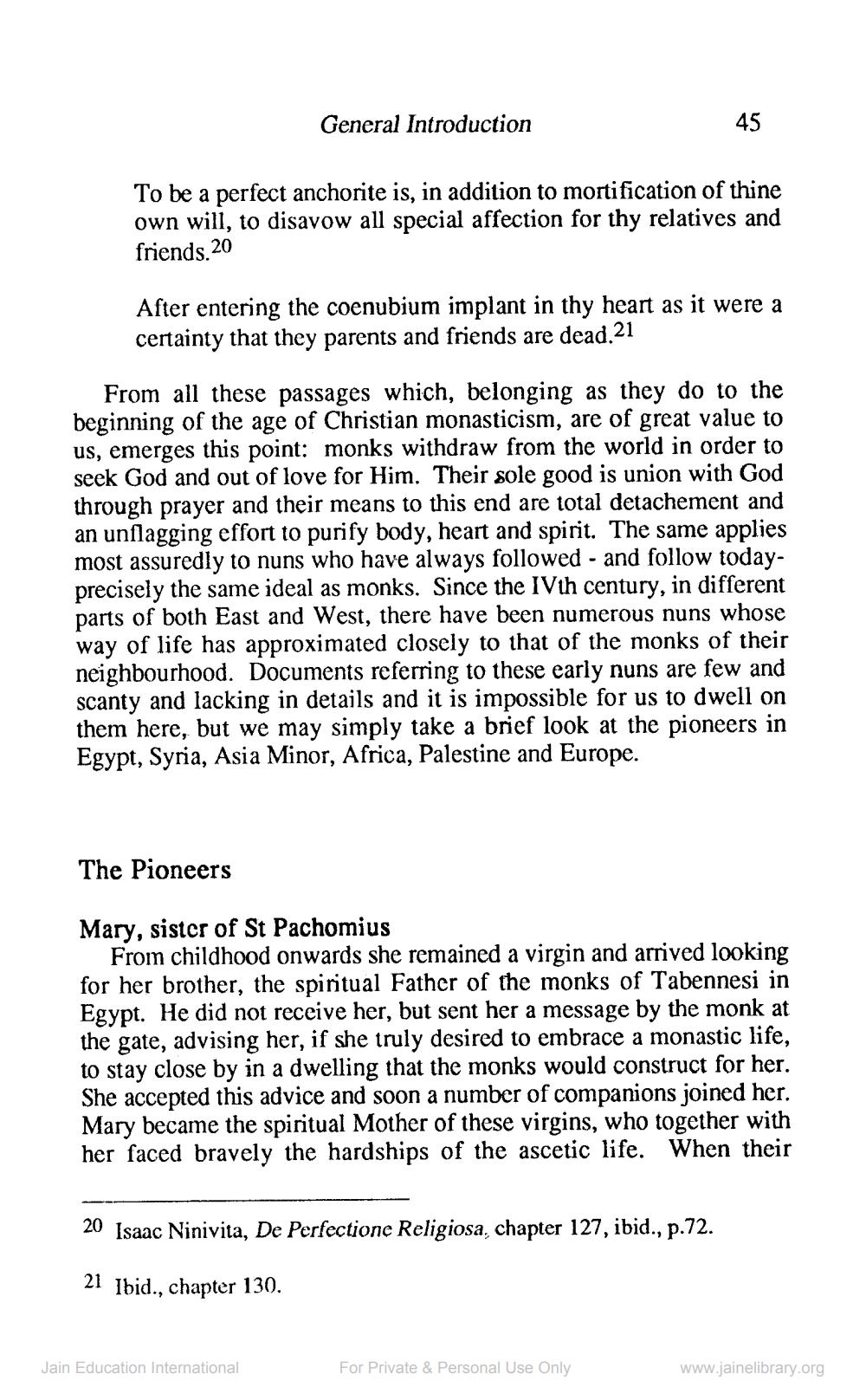________________
General Introduction
45
To be a perfect anchorite is, in addition to mortification of thine own will, to disavow all special affection for thy relatives and friends.20
After entering the coenubium implant in thy heart as it were a certainty that they parents and friends are dead.21
From all these passages which, belonging as they do to the beginning of the age of Christian monasticism, are of great value to us, emerges this point: monks withdraw from the world in order to seek God and out of love for Him. Their sole good is union with God through prayer and their means to this end are total detachement and an unflagging effort to purify body, heart and spirit. The same applies most assuredly to nuns who have always followed - and follow todayprecisely the same ideal as monks. Since the IVth century, in different parts of both East and West, there have been numerous nuns whose way of life has approximated closely to that of the monks of the neighbourhood. Documents referring to these early nuns are few and scanty and lacking in details and it is impossible for us to dwell on them here, but we may simply take a brief look at the pioneers in Egypt, Syria, Asia Minor, Africa, Palestine and Europe.
The Pioneers
Mary, sister of St Pachomius
From childhood onwards she remained a virgin and arrived looking for her brother, the spiritual Father of the monks of Tabennesi in Egypt. He did not receive her, but sent her a message by the monk at the gate, advising her, if she truly desired to embrace a monastic life, to stay close by in a dwelling that the monks would construct for her. She accepted this advice and soon a number of companions joined her. Mary became the spiritual Mother of these virgins, who together with her faced bravely the hardships of the ascetic life. When their
20 Isaac Ninivita, De Perfectione Religiosa, chapter 127, ibid., p.72.
21 Ibid., chapter 130.
Jain Education International
For Private & Personal Use Only
www.jainelibrary.org




